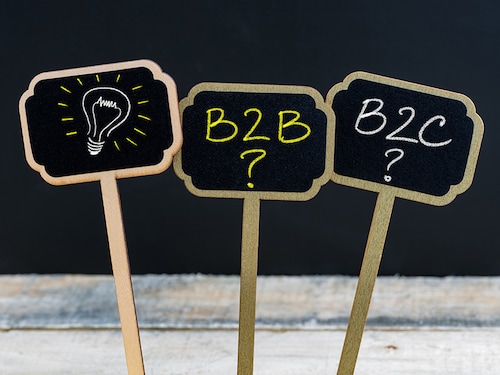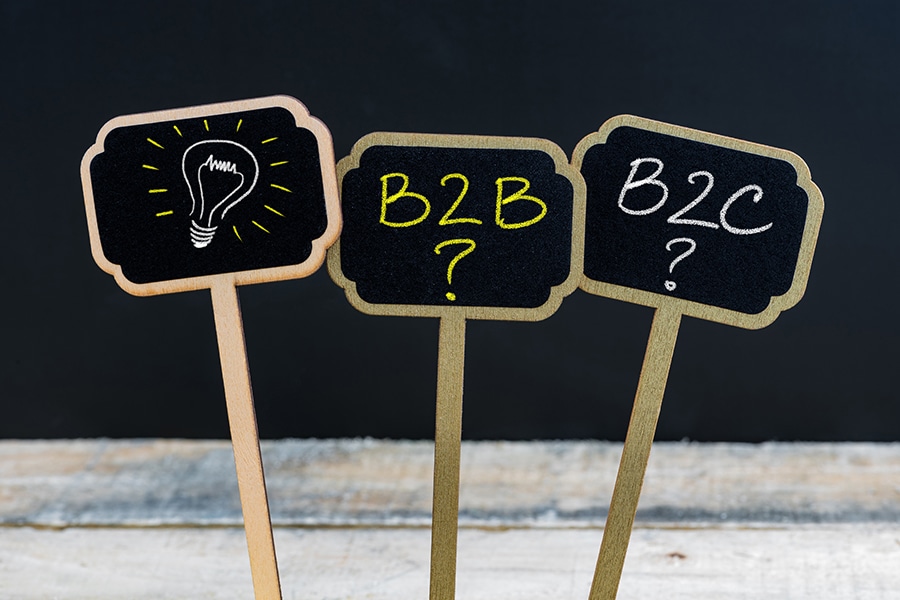Is Business-to-Everyone (B2E) the future of B2B?
To be successful in the rapidly changing digital world, businesses should be able to deliver personalized customer experiences to individuals that are part of the buying decisions


 Image: Shutterstock[br]Historically, businesses considered the B2B buying journey to be linear. However, technology is changing the way B2B customers buy. As a result, modern B2B buying is not linear anymore. Since a wealth of information that is available through a variety of sources influences customers, businesses need to engage customers at all stages of their buying journey. According to a recent Harvard Business Review article, about 73% of B2B buying decisions are made by executives, who are in the age groups of 20 to 35 years. These buyers research products or services on their mobile phones or laptops even before meeting their prospective sellers. Google termed this search process as the Zero Moment of Truth (ZMOT). By the time the sales representative meets the buyer, the buyer already has a wealth of information about the company, its products, and product reviews. Given that buyers have tremendous control over their buying journey, businesses need to involve in the prospect’s ZMOT proactively.
Image: Shutterstock[br]Historically, businesses considered the B2B buying journey to be linear. However, technology is changing the way B2B customers buy. As a result, modern B2B buying is not linear anymore. Since a wealth of information that is available through a variety of sources influences customers, businesses need to engage customers at all stages of their buying journey. According to a recent Harvard Business Review article, about 73% of B2B buying decisions are made by executives, who are in the age groups of 20 to 35 years. These buyers research products or services on their mobile phones or laptops even before meeting their prospective sellers. Google termed this search process as the Zero Moment of Truth (ZMOT). By the time the sales representative meets the buyer, the buyer already has a wealth of information about the company, its products, and product reviews. Given that buyers have tremendous control over their buying journey, businesses need to involve in the prospect’s ZMOT proactively.
As the B2B buying journey is changing in a digitally mediated world, Adobe recently introduced a new approach to B2B marketing, Business-to-Everyone (B2E). According to the new approach, to be successful in the rapidly changing digital world, businesses should be able to deliver personalized customer experiences to individuals that are part of the buying decisions.
Traditionally, B2B and B2C models have been separated, and the differences between the two models are well established. But, in today’s context, given the rise of technology, the B2B vs. B2C boundaries are disappearing. Global B2B firms with an increasing focus on the B2E approach are announcing their entry into B2C markets. For example, ABB India has announced its foray into e-commerce marketplace called eMart, which will be focused on serving both B2B and B2C segments. Similarly, leading B2B e-commerce firm, Udaan was planning to foray into B2C e-commerce through its new app called Pickily, which offers FMCG products across different locations in India. To understand the fundamental drivers of businesses that are transitioning to B2E models, we have applied a natural language processing (NLP) method called topic modeling that helped us discover the underlying themes or topics of the announcements of these transitions. Our analysis suggests that the fundamental drivers of the B2E approach include technology, customer experience, and leadership.
Technology:
Technology is playing an increasingly important role in B2B buying behavior. Today, about two-thirds of the entire B2B buying process takes place online. Firms that are transitioning into a B2E world are modifying their existing sales approaches and are focusing on a multi-channel sales approach that includes digital channels, websites, and mobile apps. For example, FedEx uses chatbots and online virtual assistants to advise its customers proactively.
Customer Experience:
The emphasis on customer experience is not just limited to consumer markets. With more than 70% of millennials involved in B2B purchase decisions, these new buyers are expecting the same, seamless buying experiences they are used to in their personal buying experiences from the B2B sellers as well. Therefore, businesses are adapting to meet the changing expectations of their customers. For example, Tata Power is looking to morph a pure-play utility into a customer-focused company that includes home automation and EV charging.
Leadership:
B2B business leaders have a deep understanding of their industries. However, B2C businesses need to understand the emerging trends and attitudes of the customers better. Instead of focusing on traditional B2B approaches, leaders of B2B firms that are transitioning into B2E models are emphasizing on customer segmentation based on user psychographics. To be successful in the digital world, B2B firms should smartly blend B2B and B2C marketing strategies. For example, Slack, one of the fastest-growing SaaS companies, uses B2C strategies such as digital marketing and brand marketing campaigns to acquire B2B customers. The service-oriented leadership of Slack’s CEO drove the firm to establish a dedicated customer experience team that listens to its customers and fine-tunes the service accordingly.
We are entering a B2E world, where the B2B and B2C models are merging. The B2B buyer journey is rapidly changing. To be successful in the rapidly evolving digital world, businesses should leverage digital and social technologies to deliver personalized customer experiences. B2B business leaders should focus on creating a culture that prioritizes customer engagement.
Kiran Pedada, Assistant Professor of Marketing at the Indian School of Business
Saurav Petwe, Research Intern at the Indian School of Business
First Published: Aug 26, 2020, 09:28
Subscribe Now